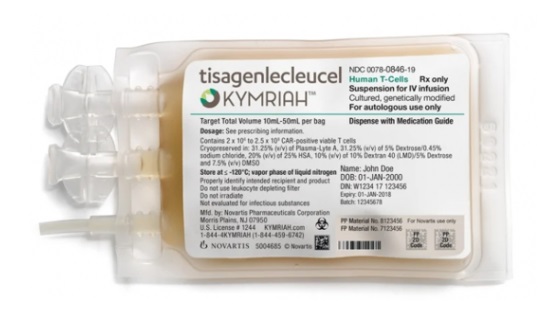Novartis Korea presented a study on the treatment of Koreans with diffuse large B-cell lymphoma (DLBCL) patients and their financial burdens at an international conference last week.

The company shared its findings identifying demographic characteristics, treatment patterns, and prognosis DLBCL patients in Korea during the International Congress of BMT 2021 and 26th Annual Congress of the Korean Society of Blood and Marrow Transplantation (KSBMT) from Thursday to Saturday.
The research analyzed 4,931 cases reported to the Health Insurance Review and Assessment Service (HIRA) between January 2013 and July 2019. Professor Park Mi-hai of the School of Pharmacy at Sungkyunkwan University led the study.
In the analysis, the median overall survival of DLBCL patients who failed to respond to the second treatment was 4.73 months.
About 70 percent of the patients who failed the second treatment repeatedly received salvage chemotherapy. The median period for taking the third-line treatment after failing the second therapy was 2.86 months.
However, the company pointed out that patients who participated in the phase 2 JULIET trial showed an overall response rate of 53 percent when treated with CAR-T treatment Kymriah, and 39.1 percent of them reached complete remission. In addition, about 48.2 percent of the patients who received Kymriah were expected to survive through the first year and 40.4 percent for the second year.
DLBCL is an aggressive lymphoma that accounts for about 40 percent of non-Hodgkin lymphoma. About 10 to 15 percent of patients do not respond to first-line treatment, and 20 to 35 percent show recurrence.
“We could confirm the poor prognosis and limitations of current treatment in domestic patients with relapsed or refractory DLBCL through the study,” Professor Park said. “Although we already knew that we lack alternative treatments for relapsed or refractory DLBCL patients with poor prognosis, the study showed valuable results as it was the first study in Korea to analyze all registered patients.”
Park added that patients with DLBCL need other treatments as they repeat salvage chemotherapies, which shortens the treatment period between subsequent therapies after failing preceding medication.
Professor Yoon Duk-hyun of the Department of Oncology at Asan Hospital, who also participated in the research, also said, “Although there were some limitations, such as excluding patients who participated in the clinical trial, the analysis is inspiring because the treatment pattern or prognosis of most patients could be observed,”
Professor Yoon added that they are looking forward to new targeted and cell therapies differentiated from the existing treatments, but the access to those medicines needs to be improved as they cost too much,

